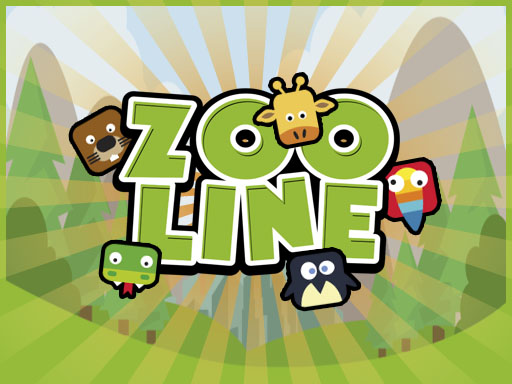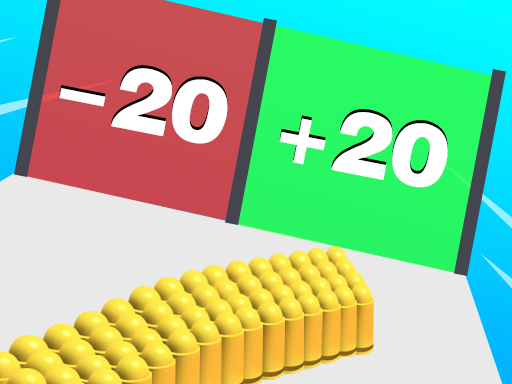Unscrew the Pin Jam
About Unscrew the Pin Jam
Okay, so you know how sometimes you stumble upon a game, completely by accident, and it just… *clicks*? Like, it wasn't even on your radar, but then you try it, and suddenly, hours have vanished, and you're left with this goofy grin on your face, wondering where this masterpiece has been all your life? Yeah, that's exactly what happened to me with this absolute gem, "Unscrew the Pin Jam." No, seriously, stop whatever you're doing, because I need to tell you about this.
I've always been drawn to games that scratch that particular itch – you know, the one for methodical problem-solving, for taking something chaotic and bringing order to it. There's something inherently satisfying about it, isn't there? Whether it's meticulously organizing your inventory in an RPG, perfecting a city layout in a builder, or, in this case, untangling a seemingly impossible mess of colorful pins and screws. And honestly, when I first saw "Unscrew the Pin Jam," I was a little skeptical. Another puzzle game? Sure, I thought. But then I dove in, and oh my goodness, it’s not just *another* puzzle game. It’s an experience.
Imagine this: you're presented with a three-dimensional board, a complex structure of various shapes, all held together by an array of screws. And these aren't just any screws; they're holding down colorful pins, which are in turn blocking other pins, or entire sections of the board. It's a beautiful, intricate, almost intimidating tangle of mechanics and vibrant hues. The initial sight of it is a bit like looking at one of those impossible knot puzzles, where you just know there's a solution, but your brain hasn't quite figured out how to even begin to untangle it. But here’s the brilliant thing about this game: it eases you into it, then slowly, almost imperceptibly, ratchets up the complexity until you’re performing mental gymnastics you didn't even know you were capable of.
The core loop, that almost meditative dance of systematically removing every single screw, is where it all begins. You're presented with this glorious, sometimes infuriating, jam. Your goal? To remove every screw, sort those vibrant pins, and match them to their designated slots. And here’s the kicker, the delicious little twist that makes your brain hum: you absolutely cannot cause a jam. One wrong move, one screw removed out of sequence, and you’re stuck. That’s where the true genius of "Unscrew the Pin Jam" lies. It's not just about brute-forcing solutions; it's about foresight, planning, and a surprising amount of spatial reasoning.
You see, the board isn't static. This isn't some flat, two-dimensional affair. Oh no, this is full 3D, and that's crucial. You'll find yourself constantly rotating the board, tilting it, zooming in and out, searching for that one, crucial screw that's holding everything else hostage. Sometimes, what looks like an obvious first move from one angle is actually a trap, a pathway to an inevitable jam. But then you rotate the board, you shift your perspective, and suddenly, a hidden screw, previously obscured, reveals itself. It’s like the game is whispering secrets to you, if only you're patient enough to listen and look from every possible angle. That moment when you spot the screw you can *safely* loosen first, the one that unlocks a cascade of subsequent moves, is just pure, unadulterated satisfaction. It’s that feeling of a mental knot finally loosening, a puzzle piece slotting perfectly into place.
And then there's the tactile (well, virtual tactile) sensation of it all. You select a screw, and with a satisfying *whirr* and a gentle *pop*, it comes loose. The pins it was holding are now free, perhaps sliding down into a new position, opening up new possibilities, or, if you've made a mistake, creating a fresh, impenetrable jam. The visual feedback is impeccable; the colors of the pins are so bright and distinct, and the way they move and settle feels incredibly natural. It’s just so incredibly well-designed.
What's fascinating is how the game takes something that sounds inherently stressful – untangling a jam – and makes it strangely relaxing. I mean, you’d think the pressure of not messing up would be immense, but instead, it fosters this incredible state of flow. You get so absorbed in the process, so focused on the vibrant colors and the intricate mechanics, that the outside world just fades away. It’s just you, the board, and the quiet hum of your brain working through the problem. There's a real meditative quality to it, almost like a digital zen garden, where your task is to bring order to chaos, one perfectly chosen screw at a time.
The "sort colorful pins and match them to the right slots" part comes after you've freed them. Once a screw is removed, the pins that were held down by it become available. Now, you have to guide them, often through a series of internal channels and pathways within the 3D structure, to their designated color-coded slots. It's not just about unscrewing; it's about understanding the flow, anticipating how the pins will move, and ensuring they don't get stuck on their way to their proper home. And then, as the ultimate reward for your careful planning, you have to keep matching the *screws* of the right color and put them in the box of the corresponding color. It's this beautiful, satisfying final flourish that truly completes each puzzle. It's like you're not just solving a puzzle; you're meticulously disassembling and then perfectly organizing a miniature, complex machine.
In my experience, the best moments come when you're staring at a particularly gnarly jam, convinced it's impossible. You've rotated the board a dozen times, tried every obvious move, and you're just about to throw in the towel. But then, you take a deep breath, rotate it *one more time*, and suddenly, you see it. A tiny, almost invisible screw, tucked away behind a stack of pins, that when removed, unlocks the entire structure. That "aha!" moment, that rush of understanding, is what keeps me coming back. It’s that feeling of your brain stretching, pushing past its perceived limits, and then snapping into place with a solution.
And then there's the "remove screw mode," which feels like a focused, distilled version of the main game, perhaps with different constraints or a specific emphasis on the sheer act of sequential unscrewing. It’s another layer of challenge, another way to engage with the core mechanics that are just so cleverly designed. It shows a real understanding from the developers of what makes this kind of puzzle so compelling.
What I love about games like this is how they respect your intelligence. They don't hold your hand too much, but they also don't leave you completely adrift. They give you the tools, present the challenge, and then let your own curiosity and problem-solving instincts take over. You can almost feel the weight of the virtual tool in your hand, hear the soft *clink* of a freed pin, and see the vibrant colors pop as you clear a section of the board. The tension isn't about fast reflexes; it's about the quiet, internal pressure of logical deduction. Your heart rate might not be pounding from an adrenaline rush, but it definitely quickens with the thrill of a breakthrough.
Honestly, I can't recommend "Unscrew the Pin Jam" enough. It's one of those rare finds that truly stands out in a crowded genre. It's not just a game; it's a mental workout, a calming retreat, and a genuinely satisfying journey of discovery, all rolled into one. If you've ever found joy in untangling wires, solving a Rubik's Cube, or just bringing order to a chaotic space, then trust me, you need to experience this. Go on, give it a try. Just wait until you encounter your first truly complex board – the real magic happens when you realize you're capable of solving it. You'll thank me later.
I've always been drawn to games that scratch that particular itch – you know, the one for methodical problem-solving, for taking something chaotic and bringing order to it. There's something inherently satisfying about it, isn't there? Whether it's meticulously organizing your inventory in an RPG, perfecting a city layout in a builder, or, in this case, untangling a seemingly impossible mess of colorful pins and screws. And honestly, when I first saw "Unscrew the Pin Jam," I was a little skeptical. Another puzzle game? Sure, I thought. But then I dove in, and oh my goodness, it’s not just *another* puzzle game. It’s an experience.
Imagine this: you're presented with a three-dimensional board, a complex structure of various shapes, all held together by an array of screws. And these aren't just any screws; they're holding down colorful pins, which are in turn blocking other pins, or entire sections of the board. It's a beautiful, intricate, almost intimidating tangle of mechanics and vibrant hues. The initial sight of it is a bit like looking at one of those impossible knot puzzles, where you just know there's a solution, but your brain hasn't quite figured out how to even begin to untangle it. But here’s the brilliant thing about this game: it eases you into it, then slowly, almost imperceptibly, ratchets up the complexity until you’re performing mental gymnastics you didn't even know you were capable of.
The core loop, that almost meditative dance of systematically removing every single screw, is where it all begins. You're presented with this glorious, sometimes infuriating, jam. Your goal? To remove every screw, sort those vibrant pins, and match them to their designated slots. And here’s the kicker, the delicious little twist that makes your brain hum: you absolutely cannot cause a jam. One wrong move, one screw removed out of sequence, and you’re stuck. That’s where the true genius of "Unscrew the Pin Jam" lies. It's not just about brute-forcing solutions; it's about foresight, planning, and a surprising amount of spatial reasoning.
You see, the board isn't static. This isn't some flat, two-dimensional affair. Oh no, this is full 3D, and that's crucial. You'll find yourself constantly rotating the board, tilting it, zooming in and out, searching for that one, crucial screw that's holding everything else hostage. Sometimes, what looks like an obvious first move from one angle is actually a trap, a pathway to an inevitable jam. But then you rotate the board, you shift your perspective, and suddenly, a hidden screw, previously obscured, reveals itself. It’s like the game is whispering secrets to you, if only you're patient enough to listen and look from every possible angle. That moment when you spot the screw you can *safely* loosen first, the one that unlocks a cascade of subsequent moves, is just pure, unadulterated satisfaction. It’s that feeling of a mental knot finally loosening, a puzzle piece slotting perfectly into place.
And then there's the tactile (well, virtual tactile) sensation of it all. You select a screw, and with a satisfying *whirr* and a gentle *pop*, it comes loose. The pins it was holding are now free, perhaps sliding down into a new position, opening up new possibilities, or, if you've made a mistake, creating a fresh, impenetrable jam. The visual feedback is impeccable; the colors of the pins are so bright and distinct, and the way they move and settle feels incredibly natural. It’s just so incredibly well-designed.
What's fascinating is how the game takes something that sounds inherently stressful – untangling a jam – and makes it strangely relaxing. I mean, you’d think the pressure of not messing up would be immense, but instead, it fosters this incredible state of flow. You get so absorbed in the process, so focused on the vibrant colors and the intricate mechanics, that the outside world just fades away. It’s just you, the board, and the quiet hum of your brain working through the problem. There's a real meditative quality to it, almost like a digital zen garden, where your task is to bring order to chaos, one perfectly chosen screw at a time.
The "sort colorful pins and match them to the right slots" part comes after you've freed them. Once a screw is removed, the pins that were held down by it become available. Now, you have to guide them, often through a series of internal channels and pathways within the 3D structure, to their designated color-coded slots. It's not just about unscrewing; it's about understanding the flow, anticipating how the pins will move, and ensuring they don't get stuck on their way to their proper home. And then, as the ultimate reward for your careful planning, you have to keep matching the *screws* of the right color and put them in the box of the corresponding color. It's this beautiful, satisfying final flourish that truly completes each puzzle. It's like you're not just solving a puzzle; you're meticulously disassembling and then perfectly organizing a miniature, complex machine.
In my experience, the best moments come when you're staring at a particularly gnarly jam, convinced it's impossible. You've rotated the board a dozen times, tried every obvious move, and you're just about to throw in the towel. But then, you take a deep breath, rotate it *one more time*, and suddenly, you see it. A tiny, almost invisible screw, tucked away behind a stack of pins, that when removed, unlocks the entire structure. That "aha!" moment, that rush of understanding, is what keeps me coming back. It’s that feeling of your brain stretching, pushing past its perceived limits, and then snapping into place with a solution.
And then there's the "remove screw mode," which feels like a focused, distilled version of the main game, perhaps with different constraints or a specific emphasis on the sheer act of sequential unscrewing. It’s another layer of challenge, another way to engage with the core mechanics that are just so cleverly designed. It shows a real understanding from the developers of what makes this kind of puzzle so compelling.
What I love about games like this is how they respect your intelligence. They don't hold your hand too much, but they also don't leave you completely adrift. They give you the tools, present the challenge, and then let your own curiosity and problem-solving instincts take over. You can almost feel the weight of the virtual tool in your hand, hear the soft *clink* of a freed pin, and see the vibrant colors pop as you clear a section of the board. The tension isn't about fast reflexes; it's about the quiet, internal pressure of logical deduction. Your heart rate might not be pounding from an adrenaline rush, but it definitely quickens with the thrill of a breakthrough.
Honestly, I can't recommend "Unscrew the Pin Jam" enough. It's one of those rare finds that truly stands out in a crowded genre. It's not just a game; it's a mental workout, a calming retreat, and a genuinely satisfying journey of discovery, all rolled into one. If you've ever found joy in untangling wires, solving a Rubik's Cube, or just bringing order to a chaotic space, then trust me, you need to experience this. Go on, give it a try. Just wait until you encounter your first truly complex board – the real magic happens when you realize you're capable of solving it. You'll thank me later.
Enjoy playing Unscrew the Pin Jam online for free on Latoosm. This Puzzle game offers amazing gameplay and stunning graphics. No downloads required, play directly in your browser!
How to Play
Mouse click or tap to play





Comments
This game is awesome! I love the graphics and gameplay.
One of the best games I've played recently. Highly recommended!